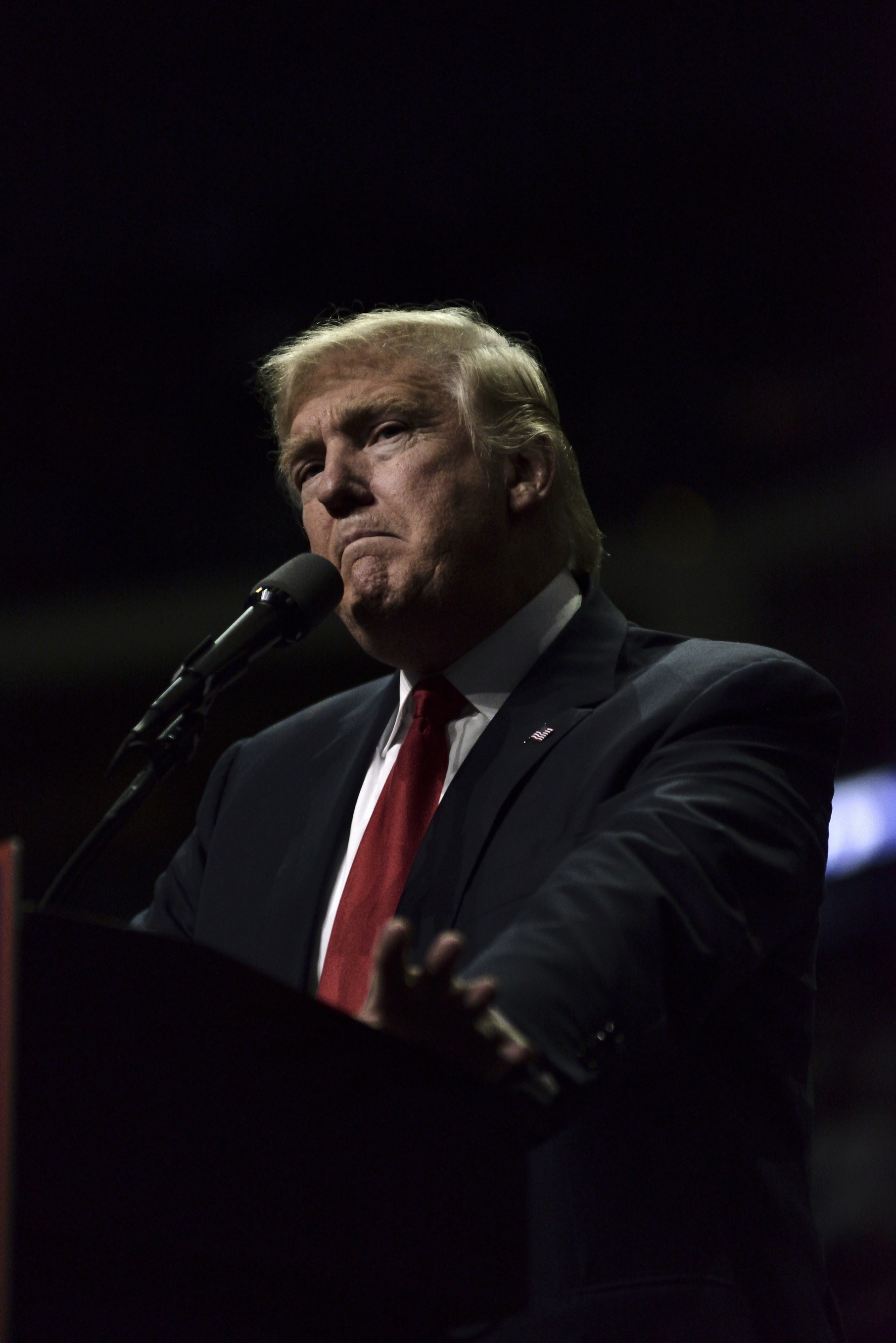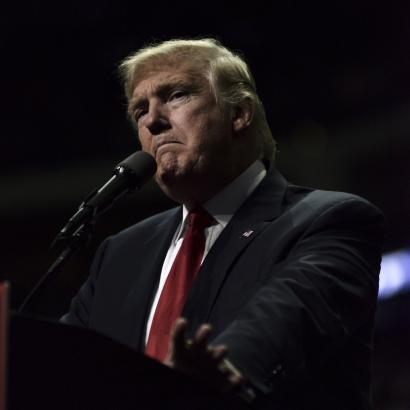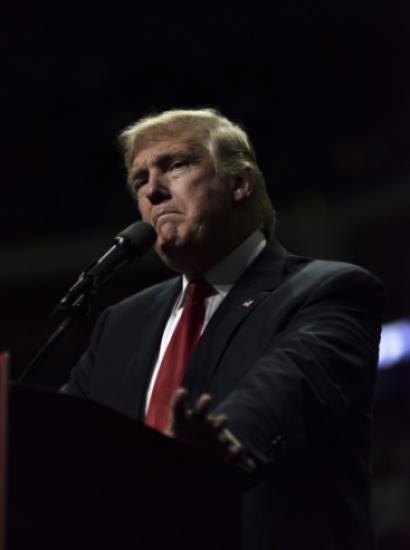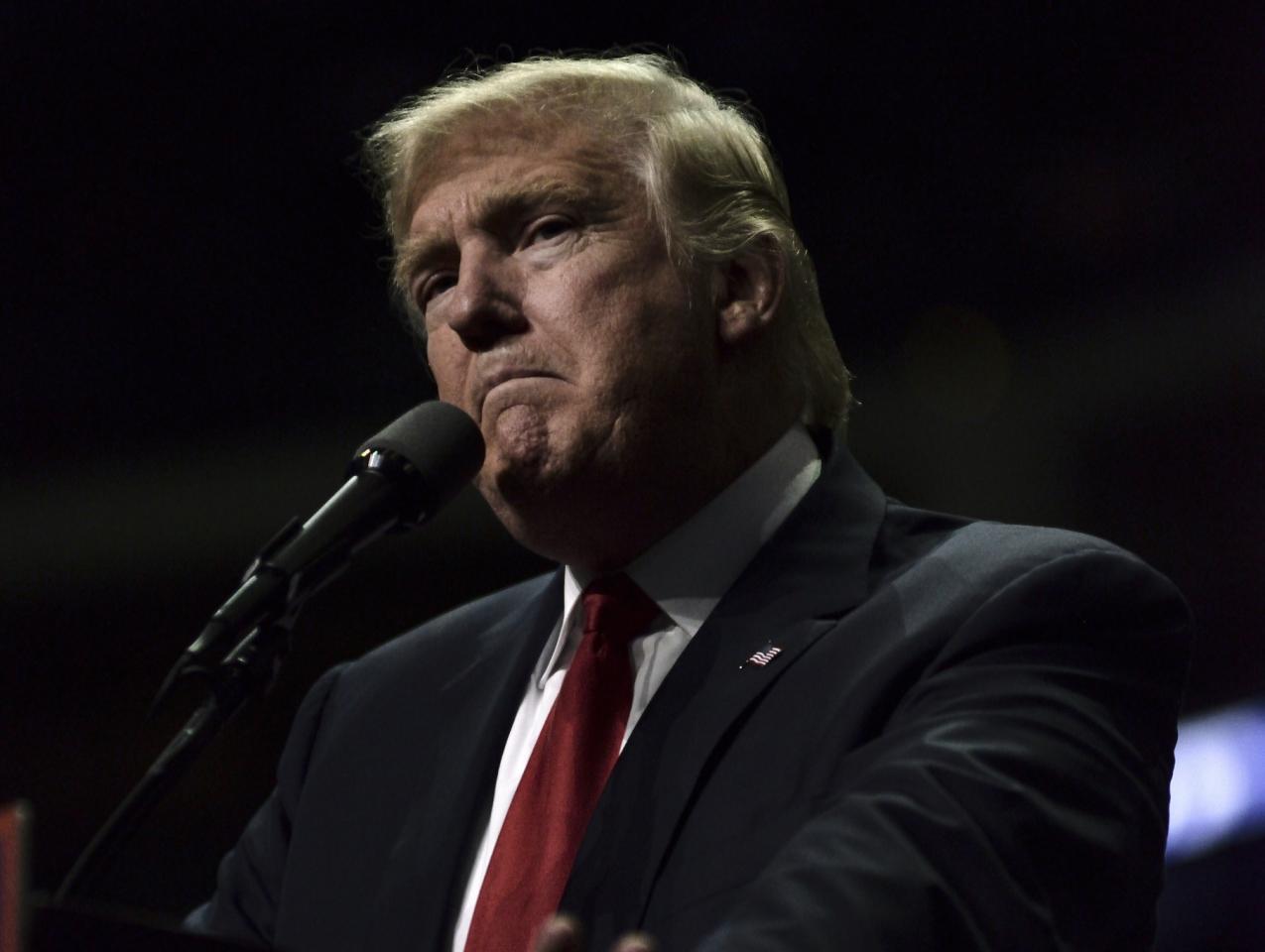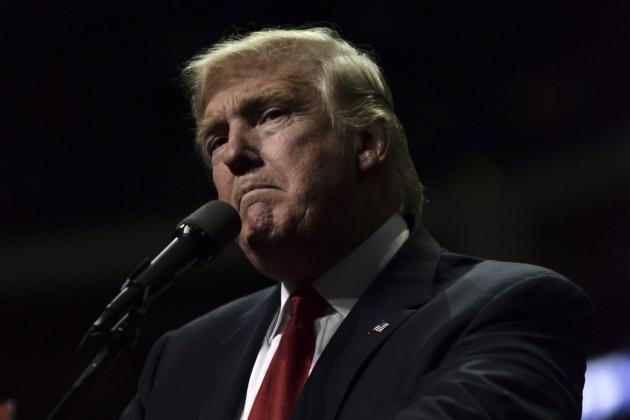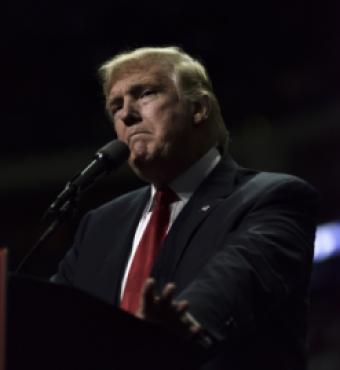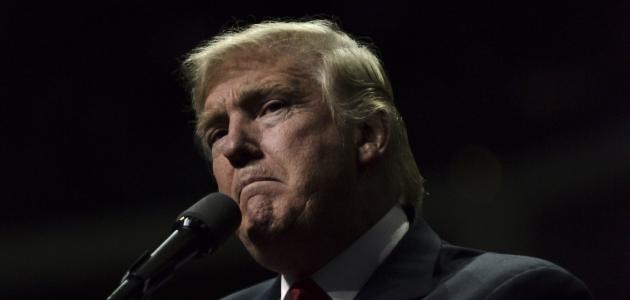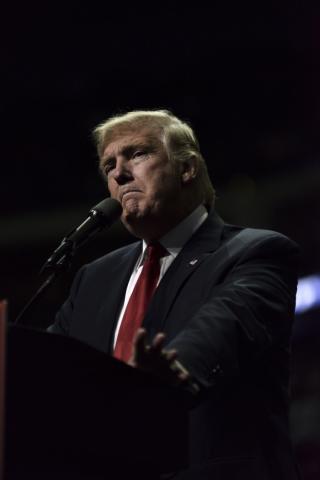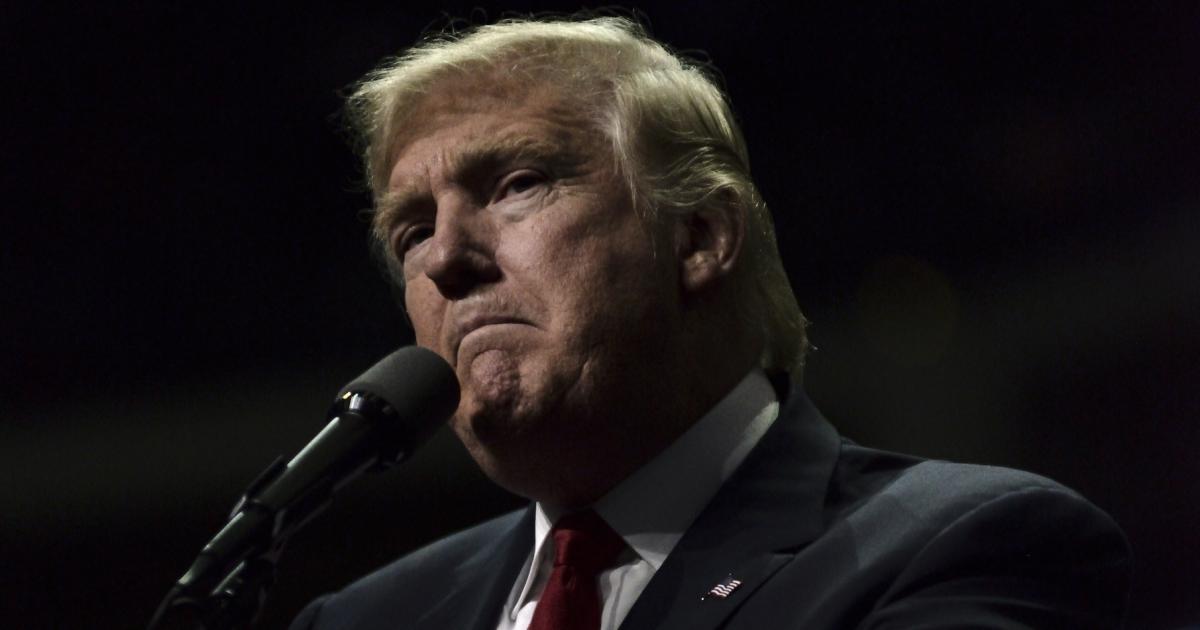- Energy & Environment
- International Affairs
- Key Countries / Regions
- Middle East
- Security & Defense
- Terrorism
- Politics, Institutions, and Public Opinion
- Campaigns & Elections
- The Presidency
- Congress
- State & Local
- California
This being my first column of the new year, let’s start things off with a high-altitude, big-picture look at the relationship between President Trump and California—namely, what, if anything, will change will change politically or policywise?
The political side of the coin is an easy answer. The 2020 election boils down to two unknowns—Trump’s re-election and partisan control of Congress. In both regards, Trump and California remain two ships that pass in the night.
Let’s suppose the Trump campaign decided that it wanted to fight for California’s 55 electoral votes (no Republican has carried the Golden State in a presidential election since the late George W. Bush narrowly did so in 1988—after California had gone GOP in eight of the nine previous presidential races).
The president and his campaign wouldn’t get very far.
Trump received only 31.6% of California’s vote in the 2016 presidential race, the worst for a Republican since Alf Landon in 1936 (he received 31.7%).
In terms of ballots cast, it’d be akin to the grand abyss next door in Arizona. Trump’s California margin of defeat was nearly 4.2 million votes (he lost the national popular vote by nearly 2.9 million votes).
How to overcome that disadvantage?
Let’s do a little math, courtesy of 2016’s results. Eliminate every ballot cast in the five most immediate San Francisco Bay Area counties (15.6% of all votes in California in 2016), then toss in Los Angeles County (that expanse accounted for nearly 25% of California’s presidential electorate), and Trump now has nearly 38% of that slimmed-down tally—much in line with his performances in fellow big-blue states New York (36.2%) and Illinois (38.8%).
However, Trump would still trail in California by more than 1.2 million votes, trying to make up ground in a state where he’s regressed since the last election (according to Morning Consult, Trump’s California net approval rating has decreased 22 points since he took office).
So forget about those 55 electoral votes going Trump’s way in November.
Still, there’s an inviting target for Trump and congressional Republican strategists—seven California congressional districts presently held by first-term Democrats (historically, the most endangered species on Capitol Hill is freshmen House members).
However, looks are deceiving.
Once the dust settled after the 2018 midterm election, 31 House Democrats held seats in districts that Trump carried in 2016. But not one of those districts is in the Golden State.
Nor does earthquake-prone California seem to be at the epicenter for control of the House come 2021—not at the moment, at least.
The forecasting Cook Political Report rates only 23 of the 435 House seats as “toss-up” races (18 held by Democrats and 5 by Republicans). Again, not one is in California. Among the seven freshmen-held districts in the state, six (the 10th, 21st, 25th, 39th, 45th and 48th) are designated to “lean” Democratic and the other—California’s 49th Congressional District—is rated as “likely” Democratic.
How does that translate in how these Washington newcomers conduct their business?
All seven of California’s freshmen House Democrats voted yes on the two Trump impeachment articles. One of that septet, Rep. Gil Cisneros (his 39th Congressional District touches parts of Los Angeles and Orange and San Bernardino Counties), added his byline to this Washington Post op-ed meant to sway fence-sitting House Democrats. Is that a sign of job security or a reflection that California’s freshman squad follows House Speaker Nancy Pelosi’s lead (indeed, seven freshmen came out in favor of impeachment after the Speaker okayed the formal inquiry).
It’s the policy side of the Trump-California dynamic that may prove to be more of a surprise in 2020, once one looks after the usual bluster.
What’s “usual bluster,” you ask?
On Christmas Day the president retweeted a week-old criticism of California governor Gavin Newsom’s handling of the Golden State’s homelessness crisis, along with this threat: “If he can’t fix the problem, the Federal Gov. will get involved!”
Trump extended the holiday cheer in Pelosi’s direction with this tweet the following day: “Nancy Pelosi’s District in California has rapidly become one of the worst anywhere in the U.S. when it comes to homeless & crime. It has gotten so bad, so fast – she has lost total control and, along with her equally incompetent governor, Gavin Newsom, it is a very sad sight!”
It’s an election year, so California will remain a convenient foil (or piñata) and a cautionary tale for Trump to retell across America’s heartland, as he portrays the Golden State and its Democratic leadership as incapable of moderation.
But were Trump to choose a different path—and the goal of a partnership with his erstwhile sparring partners?
Here are four avenues the president could pursue.
Natural Disasters. A year ago, Trump said he’d ordered the federal government to stop relief funds for California until such time as “they get their act together” on forest management—a threat he renewed in early November.
A less-iron-glove, more-velvet-fist approach would be for federal and state officials to stage a summit in California and have an earnest conversation regarding natural disasters—not just forest clearing, but earthquake preparation and the stability of California’s flood-threatened dam and weir complex.
Infrastructure. It’s the most obvious middle ground since Trump took office and Democrats took over the House—a developer-turned-politician who likes to build; congressmen who relish the thought of construction-site photo ops back in their home districts.
So, in theory, an infrastructure deal should be in play.
But with this caveat: once impeachment runs its course, a favorite Washington guessing game will be Speaker Pelosi’s mindset. Will the realpolitik need for helping the 30 members of her caucus in those Trump-friendly districts (one such example: December’s swift end to the US-Mexico-Canada trade impasse) hold sway? Or does the Speaker decide not to work with Trump, leaving the president without much to show in 2020 other than judicial appointments (that includes Trump filling the liberal Ninth Circuit Court of Appeals with conservative jurists). Such a grand infrastructure bargain between Trump and Pelosi (and Newsom) is fraught with land mines—for openers, they disagree on California’s controversial high-speed rail project. Besides, House Minority Leader Kevin McCarthy—he of Bakersfield—would want to add more conservative Central Valley concerns to the mix.
If Trump wants to do something truly unexpected on the California infrastructure front, here’s a suggestion: see what the feds can do to help with San Francisco Bay Area gridlock (studies show that traffic delays rob some Bay Area commuters of 116 hours, or five calendar days, a year)—specifically, improvements in water transportation (ferries and port improvements).
Anti-Terrorism. In the aftermath of last week’s drone attack in Baghdad, killing Iran’s terrorism mastermind, there reportedly are no direct threats to the Golden State.
Two decades ago, that wasn’t the case.
Al-Qaeda’s plans to attack America, in addition to targeting the World Trade Center, also included Los Angeles’s Library Tower (now known as the US Bank Tower), at the time the largest building west of the Mississippi River. That’s not to be confused with the so-called “millennium attack”—al-Qaeda’s plan to set off a bomb at Los Angeles International Airport on New Year’s Eve 1999.
What the Trump Administration could do? Washington (the federal Department of Homeland Security) and Sacramento (the California Governor’s Office of Emergency Services) could publicly demonstrate that they’re aware of and in coordination over California’s plethora of soft targets (that would include San Francisco’s Bank of America building, which Trump partially owns), with the Trump administration stepping up anti-terrorism aid to the Golden State’s law enforcement agencies.
Residency. Last June, the Trump Organization quietly unloaded one of its last two properties in Los Angeles County, a five-bedroom Tudor-style home in Beverly Hills (the company bought it for $7 million back in 2007 and sold it off market for $13.5 million).
At year’s end, a different kind of “sell-off” made headlines across the Golden State: California’s lowest population-growth rate since 1900, thanks in part to negative domestic migration (about 40,000 people a year leaving for other states, where they discover lower taxes and more affordable housing).
This has political ramifications. California’s currently in danger of losing one of its 53 House seats—that’s never happened before—once the Census count is finished. The current guess: Texas picks up three seats and Florida two, while Arizona, Colorado, Montana, North Carolina, and Oregon each get one more seat in the House. The Census losers, in addition to California: Alabama, Illinois, Michigan, New York, Ohio, Pennsylvania, Rhode Island, and West Virginia, each likewise losing a congressional seat.
Where Trump could step in: he can’t overturn the Census’s findings, but he could film PSAs encouraging his loyalists to move to the Golden State. Yes, Trump publicly advocating life in America’s foremost high-tax, nanny-government state.
OK, so I went a step too far . . .
Is any of this bipartisan cooperation possible in an election year in which already tempers are short and motives held in suspicion?
Maybe, or maybe not.
But it’s a new year and a new decade. Let’s see how long we can keep the cynicism and pessimism on the back burner.







